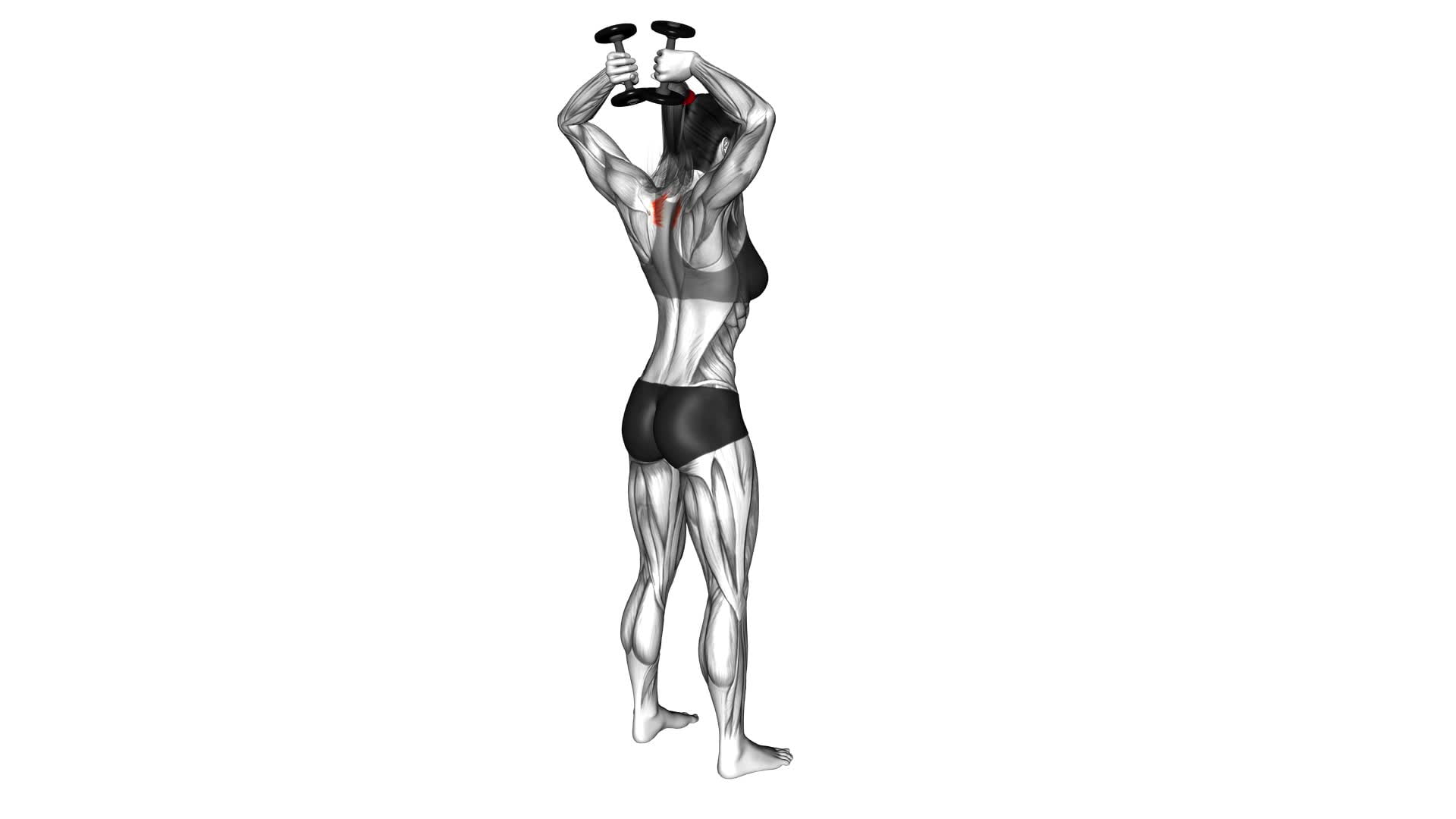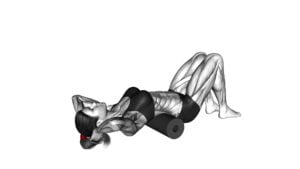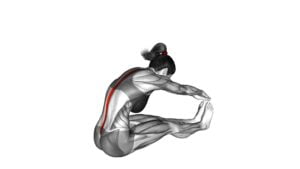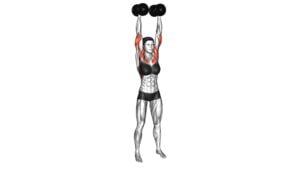Dumbbell Standing T-spine Press (female) – Video Exercise Guide & Tips

Are you a female looking to strengthen your upper body and improve your posture?
Watch This Exercise Video
Then the dumbbell standing T-spine press is the perfect exercise for you!
In this video exercise guide, we'll show you the proper form and technique to maximize your results.
With our helpful tips and modifications for beginners, as well as advanced variations to challenge yourself, you'll be on your way to a stronger, more toned upper body in no time.
Let's get started!
Key Takeaways
- Dumbbell standing T-spine press is an exercise that can improve T-spine mobility.
- It can help enhance upper body strength and overall athletic performance.
- Proper form and technique should be maintained to prevent any injuries.
- It is important to start with light weights and gradually increase intensity to avoid strain.
Benefits of the Dumbbell Standing T-spine Press
You'll experience increased mobility and strength in your upper body with the Dumbbell Standing T-spine Press. This exercise specifically targets your thoracic spine, which is the middle part of your spine. Improving thoracic spine mobility has numerous benefits for your overall health and fitness.
One major benefit of this exercise is that it helps to improve your posture. Many people have poor posture due to excessive sitting and hunching over electronic devices. The Dumbbell Standing T-spine Press helps to counteract these negative effects by opening up the chest and shoulders, allowing you to stand tall and straight.
Another benefit is that it can help reduce back pain. Poor thoracic spine mobility can lead to compensations in other areas of the body, such as the lower back. By improving mobility in the thoracic spine, you can alleviate stress on the lower back and potentially reduce pain and discomfort.
To improve thoracic spine mobility, it's important to incorporate exercises that target this area, such as the Dumbbell Standing T-spine Press. It's recommended to start with light weights and gradually increase the resistance as you become more comfortable with the movement.
Proper Form and Technique for the Exercise
To perform the Dumbbell Standing T-spine Press with proper form and technique, follow these guidelines.
Start by standing with your feet shoulder-width apart and holding the dumbbells in each hand at shoulder height, palms facing forward. Keep your core engaged and maintain a slight bend in your knees throughout the exercise.
As you press the dumbbells overhead, exhale and extend your arms fully, making sure to keep your shoulders down and away from your ears. At the top of the movement, squeeze your shoulder blades together to engage your upper back muscles.
To ensure proper form, avoid arching your lower back or leaning forward excessively during the exercise. This can put strain on your spine and lead to injury. Additionally, avoid using momentum to lift the weights by swinging your body. Instead, focus on controlled and deliberate movements.
Proper form and technique in the Dumbbell Standing T-spine Press offer several benefits. By engaging your upper back muscles, this exercise helps improve posture and strengthen the muscles that support your spine. It also targets the shoulders and triceps, contributing to overall upper body strength.
Tips for Beginners to Modify the Exercise
For beginners, try modifying the Dumbbell Standing T-spine Press by using lighter weights. This will help you build strength and improve your form before progressing to heavier weights.
Here are some beginner modifications and alternative exercises to consider:
- Use lighter dumbbells: Start with weights that are comfortable for you and gradually increase the weight as you get stronger.
- Perform the exercise seated: If standing is too challenging, try doing the T-spine press while seated on a bench or stability ball. This can help you maintain proper form and stability.
- Focus on range of motion: Instead of using weights, you can practice the movement without any resistance. This allows you to focus on your form and flexibility.
- Use a resistance band: If you don't have dumbbells, you can use a resistance band to mimic the movement of the T-spine press. This is a great option for beginners to build strength and stability.
By modifying the exercise and gradually increasing the difficulty, you can safely progress and improve your performance.
Now let's explore some advanced variations to challenge yourself further.
Advanced Variations to Challenge Yourself
As you progress in your Dumbbell Standing T-spine Press journey, there are advanced variations that will challenge you even further. These advanced modifications are designed to push your limits and help you achieve greater strength gains.
One advanced variation is the Single Arm Dumbbell Standing T-spine Press. Instead of using both dumbbells simultaneously, you'll only use one dumbbell at a time. This requires more stability and control as you engage your core to resist rotation.
Another advanced variation is the Dumbbell Standing T-spine Press with a Resistance Band. By adding a resistance band to the exercise, you increase the resistance throughout the entire range of motion, making it more challenging for your muscles.
Additionally, you can try the Half Kneeling Dumbbell Standing T-spine Press. This variation requires you to kneel on one knee while performing the exercise, which adds an extra stability challenge to your core and lower body.
These advanced modifications will test your strength and stability, helping you continue to progress in your fitness journey.
Now, let's move on to the next section and discuss common mistakes to avoid while performing the exercise.
Common Mistakes to Avoid While Performing the Exercise
As you progress in your Dumbbell Standing T-spine Press journey and aim for greater strength gains, it's important to be aware of common mistakes to avoid while performing the exercise. Maintaining correct form is crucial for maximizing the benefits of this exercise and minimizing the risk of injury. Here are some common mistakes to watch out for:
- Using too much weight: It can be tempting to grab heavier dumbbells to challenge yourself, but using weights that are too heavy can compromise your form and lead to muscle strains or imbalances. Start with lighter weights and gradually increase as your strength improves.
- Rounded shoulders: Keep your shoulders down and back throughout the movement. Avoid hunching forward or rounding your upper back, as this can put unnecessary stress on your spine.
- Arching the lower back: Maintain a neutral spine by engaging your core muscles. Avoid excessive arching of the lower back, as this can lead to lower back pain or discomfort.
- Limited range of motion: Make sure to fully extend your arms overhead and squeeze your shoulder blades together at the top of the movement. Avoid cutting the range of motion short, as this can limit the effectiveness of the exercise.
By avoiding these common mistakes and maintaining correct form, you can ensure a safe and effective Dumbbell Standing T-spine Press workout. Remember to listen to your body and modify the exercise as needed.
Happy lifting!
Sample Workout Routine Incorporating the Dumbbell Standing T-Spine Press
To incorporate the Dumbbell Standing T-Spine Press into your workout routine, start by performing the exercise two to three times a week. This will help improve your thoracic spine mobility and strengthen your upper body. To modify the exercise, you can use lighter dumbbells or decrease the range of motion if you have limited mobility. For example, you can start with a smaller range of motion and gradually increase it as you become more comfortable with the movement.
In addition to the Dumbbell Standing T-Spine Press, there are other exercises that can help improve T-spine mobility. One alternative exercise is the Quadruped T-Spine Rotation. Start by getting on all fours with your hands directly under your shoulders and your knees under your hips. Place one hand behind your head and rotate your upper body towards the ceiling, then return to the starting position. Repeat on the other side.
Another alternative exercise is the Foam Roller T-Spine Extension. Lie on a foam roller with it positioned perpendicular to your spine. With your hands behind your head, slowly extend your upper back over the foam roller and then return to the starting position.
Incorporating the Dumbbell Standing T-Spine Press and these alternative exercises into your workout routine will help improve your T-spine mobility and overall upper body strength. Remember to always consult with a fitness professional before starting any new exercise program.
Frequently Asked Questions
How Much Weight Should I Use for the Dumbbell Standing T-Spine Press?
To determine the appropriate weight for the dumbbell standing T-spine press, start with a weight that challenges you but allows you to maintain proper form. Gradually increase the weight as you become stronger and more comfortable with the exercise.
For beginners, it's important to focus on proper form and technique rather than using heavy weights. Modify the exercise by using lighter dumbbells or even starting with bodyweight only until you develop the necessary strength and stability.
Can I Do the Dumbbell Standing T-Spine Press if I Have a History of Back Problems?
If you have a history of back problems, it's important to approach the dumbbell standing T-spine press with caution. This exercise puts pressure on your back, potentially exacerbating your pain.
It's recommended to consult with a healthcare professional before attempting this exercise. They may suggest alternative exercises that target the same muscle groups without putting strain on your back.
Your safety and well-being should always be the priority when dealing with back pain.
How Often Should I Incorporate the Dumbbell Standing T-Spine Press Into My Workout Routine?
To incorporate T spine exercises into your workout routine, consider adding the dumbbell standing T-spine press. This exercise can help improve your T spine mobility, which is important for overall posture and stability.
The benefits of T spine mobility training include better upper body rotation and reduced risk of back pain.
To maximize the benefits, aim to perform the dumbbell standing T-spine press 2-3 times per week, alongside other exercises that target your core and back muscles.
Is It Necessary to Warm up Before Performing the Dumbbell Standing T-Spine Press?
Before performing the dumbbell standing T-spine press, warming up is necessary. It has several benefits, such as increasing blood flow to your muscles, improving joint mobility, and reducing the risk of injury.
Additionally, warming up prepares your body for the exercise by activating the muscles involved. To ensure proper form and technique, start with a light cardio activity like jogging or jumping jacks.
Then, perform dynamic stretches targeting the shoulders and upper back.
Can I Do the Dumbbell Standing T-Spine Press if I Don't Have Access to Dumbbells?
If you don't have access to dumbbells, there are alternative exercises you can do to target your T-spine.
One option is using a resistance band or a cable machine to perform a standing T-spine press.
You can also try doing seated T-spine rotations or using a foam roller to mobilize your T-spine.
Remember to focus on maintaining proper form and engaging the muscles in your upper back during these modifications.
Conclusion
The Dumbbell Standing T-Spine Press is a beneficial exercise for improving upper body strength and mobility.
By using proper form and technique, beginners can safely modify the exercise to suit their fitness level.
Advanced variations can be added to challenge oneself as they progress.
It's important to avoid common mistakes to prevent injury.
Incorporating the Dumbbell Standing T-Spine Press into a workout routine can help enhance overall fitness and posture.

Author
Years ago, the spark of my life’s passion ignited in my mind the moment I stepped into the local gym for the first time. The inaugural bead of perspiration, the initial endeavor, the very first surge of endorphins, and a sense of pride that washed over me post-workout marked the beginning of my deep-seated interest in strength sports, fitness, and sports nutrition. This very curiosity blossomed rapidly into a profound fascination, propelling me to earn a Master’s degree in Physical Education from the Academy of Physical Education in Krakow, followed by a Sports Manager diploma from the Jagiellonian University. My journey of growth led me to gain more specialized qualifications, such as being a certified personal trainer with a focus on sports dietetics, a lifeguard, and an instructor for wellness and corrective gymnastics. Theoretical knowledge paired seamlessly with practical experience, reinforcing my belief that the transformation of individuals under my guidance was also a reflection of my personal growth. This belief holds true even today. Each day, I strive to push the boundaries and explore new realms. These realms gently elevate me to greater heights. The unique combination of passion for my field and the continuous quest for growth fuels my drive to break new ground.



